Think for a minute about what you have in your pockets or purse right now. Some of it is probably junk, like old gum wrappers. But some of it is useful stuff you carry every day. If you’re like most people, you probably have a wallet, a phone, and a set of keys. And, depending on your habits, you might have a few other items, like a lighter or a pocketknife.
There’s a name for this basic load of stuff that fills your pockets. It’s called your everyday carry, or EDC. Even if you don’t think about it very often, your EDC matters more than you realize. What you keep on your person determines how well you can deal with all kinds of situations – both normal and unexpected.
Today, there’s a whole EDC movement, which wants to get people thinking about the things they carry. Members of this movement aim to pare down their EDC to just a few essential items that can meet all their day-to-day needs with minimum space and fuss. There’s even a website, EverydayCarry.com, where users can discuss their EDC and read reviews of different items. As members of this movement argue, EDC isn’t just about what you carry – it’s about how you live.
What Does EDC Mean?
On one level, EDC means the actual objects you carry around with you. However, your EDC doesn’t include all the stuff you happen to have on you. Most of us accumulate bits of debris in our pockets, like a receipt or a crumpled paper napkin, but this isn’t part of our EDC.
Instead, your EDC is the things you make a point of carrying every day. Some of these are practical, like your car key, while others are sentimental, like a family photo. But one way or another, they’re all things you would feel lost without.
Most people already have an EDC of some kind. However, it’s not always well thought out. Some people routinely carry around items they don’t need, like a seldom-used credit card. Others carry almost nothing and often find themselves having to borrow a pen or a match.
The EDC movement seeks to change that. Its philosophy is that you should think about the items you carry every day and make sure each one has a specific, useful purpose. This is the second meaning of the term EDC: the idea of filling your pockets as wisely as possible.
Misconceptions About EDC
You’ll often see articles about EDC on websites for “preppers” – people who put a lot of effort into being prepared for an emergency. The EDC and prepper movements are similar in some ways, and many people are part of both, but they’re not the same thing.
The key difference is that prepping means planning for a crisis, such as a natural disaster. EDC, by contrast, means being ready for the kinds of situations that can happen on a normal day. When the power goes out, or you fall and skin your knee, or you need to jot down your e-mail for a new acquaintance, you always have the tool you need. This makes EDC a practical idea for everyone, whether you think there’s a big disaster around the bend or not.
Benefits of EDC
A well-planned EDC has many benefits. Here are a few things it can help you do:
- Be Prepared. If you stock your pockets right, you can handle just about anything you face on any given day. You always know that you have everything you need to deal with your day-to-day routine, as well as any unexpected problems that crop up.
- Stay Organized. When you carry the same few items every day, it’s easy to keep track of what you have. You never have to go digging through a junk drawer to find your flashlight or ask a stranger for a pen. Everything you need is ready at hand.
- Save Time. Having everything you need right in your pockets can be a real time-saver. You never have to go looking for a clock, because you always have your phone or your watch. You never forget where you parked, because you can always snap a picture on your handy phone.
- Save Money. Paring down your EDC to a few items means you can afford to invest in good ones. This can save you money in the long run because your stuff doesn’t wear out as fast. For example, one good leather wallet can serve you for decades, taking the place of dozens of cheap vinyl ones. Likewise, a sturdy cloth handkerchief can replace boxes and boxes of disposable tissues.
- Help Others. With a good EDC, you’re always prepared to lend a hand. If there’s a package that needs opening, you can whip out your trusty pocketknife. If someone loses an earring in a dark parking lot, you can produce a flashlight. It feels good to be someone others can rely on, instead of having to ask for help yourself.
- Express Yourself. Finally, you can tailor your EDC to express your personality. For instance, if you’re a history buff, you can show your old-fashioned tastes by carrying an antique pocket watch. If you’re a sci-fi nerd, you can choose a Star Trek key chain. Little touches like these show at a glance who you are as a person.
EDC Essentials
The first step in creating an EDC system is to empty out your pockets or purse. Take a hard look at the stuff you’re carrying, and ask yourself how much you really need.
Start sorting your stuff into two piles: useful and not useful. Set aside seldom-used keys, expired gift cards, and “extra” packs of gum or tissues. Focus on items that have practical, everyday value. You can keep one or two items with sentimental value, but make sure they’re small and won’t weigh you down.
As you sort, remember that you’re not trying to carry everything you could possibly need. You’re not trying to survive for a week on a desert island; you just want to be prepared for everyday life. If you load yourself down with a whole toolbox, you’ll spend just as much time searching through stuff as you did before.
Once you’ve weeded out all the unnecessary items, it’s time to decide which ones are worth putting back. For most people, there are three basic items you can’t get along without: your wallet, key chain, and cell phone.
1. Wallet
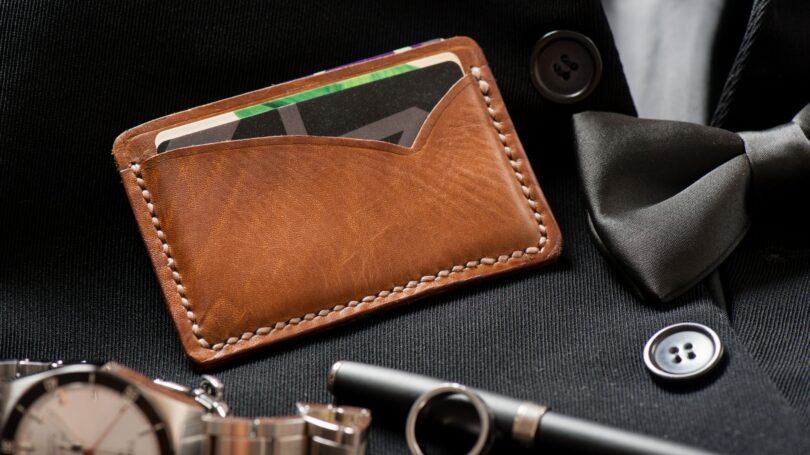
Your wallet holds all the things you need to carry out your day-to-day business. For most people, this includes at least an ID, credit cards, and cash. Many people also like to carry at least a few other items, like a library card or a couple of business cards. A good wallet will keep all these essentials organized and well-protected from damage.
Wallets come in a wide variety of styles, including bifolds, trifolds, card wallets, and money clips. Most EDC enthusiasts favor slimmer wallet styles. After all, a lot of the things that used to get tucked in a wallet, such as coupons and jotted-down phone numbers, can now be stored on your smartphone. This makes it possible to get away with a less bulky wallet that fits neatly in any pocket.
Materials for wallets also vary. Leather wallets are durable, but they’re also somewhat bulky. Many EDC fans like lightweight wallets of tough nylon or stretchy elastic fabric, carbon fiber, or even titanium. Some of the fancier models cost upwards of $100, but you can also get a sturdy, sporty nylon wallet, like this Maxpedition Micro, for less than $15.
What you carry in your wallet is at least as important as the wallet itself. Make sure yours holds all the items you need daily, and then don’t load it up with extra cards, checks, and slips of paper. It’s especially important to avoid carrying anything that could lead to identity theft, such as your Social Security card.
2. Key Chain
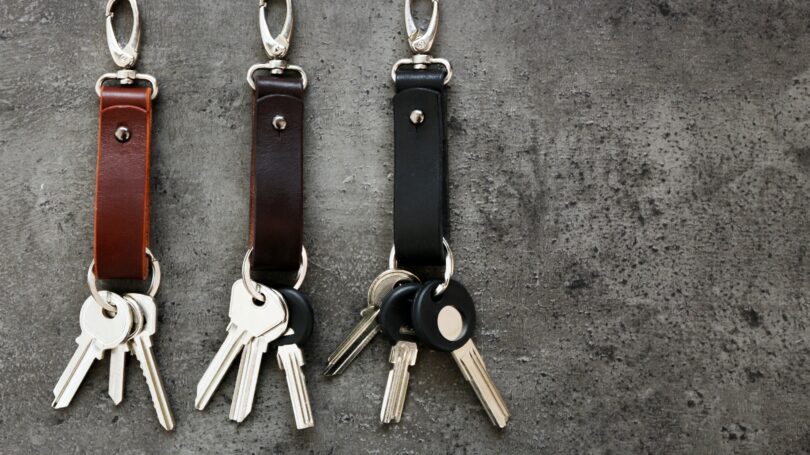
If you’re like most people, you have to carry at least a few keys every day. Your set could include keys to your house, your car, and maybe your office or a friend’s home. Carrying them around loose is a good way to lose them when you need them, so nearly everyone needs a key chain of some kind.
The simplest key chain is just a basic ring that you can thread your keys onto. These ultra-basic clips cost less than $1 each. While there’s nothing wrong with this style, many EDC fans favor snazzier key chains that can do more to keep their keys organized and accessible.
For instance, you can choose one with a built-in clip to secure your keys to a belt loop. There are also swiveling key organizers that keep all your keys neatly stacked together, so they don’t rattle around. Some can even double as a bottle opener or other tool. These fancier key chains can cost $20 or more, but they save space in your pockets and save time hunting for the key you need.
The most important thing about your key chain isn’t how it’s made, but what it holds. Just like your wallet, it should be pared down to carry only what you need on a day-to-day basis. Get rid of keys you hardly ever use, like a key to your parents’ house halfway across the country.
Weeding out all these extras will leave room on your key chain to stash a small tool or two. EDC proponents often use it as a place to keep a mini flashlight, pocketknife, or lighter.
3. Cell Phone
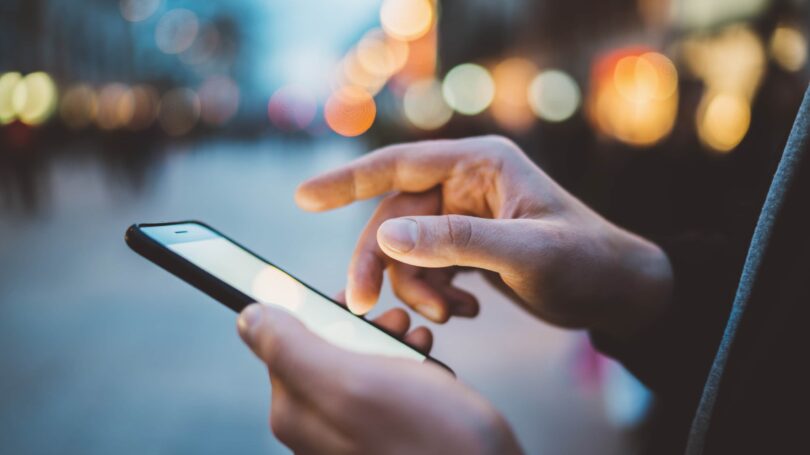
For fans of EDC, a smartphone is a great space-saver. You can use it to take pictures, jot down notes, and pay for products. It can take the place of a road map, a watch, and in a pinch, a flashlight. Some people love their smartphones so much, they hardly see any need to carry anything else.
But relying on a smartphone for everything has its downsides too. Using it constantly drains the battery and eats up data, which isn’t cheap with most cell phone plans. And taking important notes on a tiny keyboard can be a lot more awkward than using an old-fashioned pen and paper. Most EDC experts prefer to let the phone be just one part of their EDC, not the whole system.
Optional Items for EDC
For some people, these three basic items are enough. However, most EDC experts say it’s useful to add a few other items to your daily carry. You might not need all of them, but carrying at least a couple of them can vastly expand the number of situations you’re prepared to face.
4. Flashlight
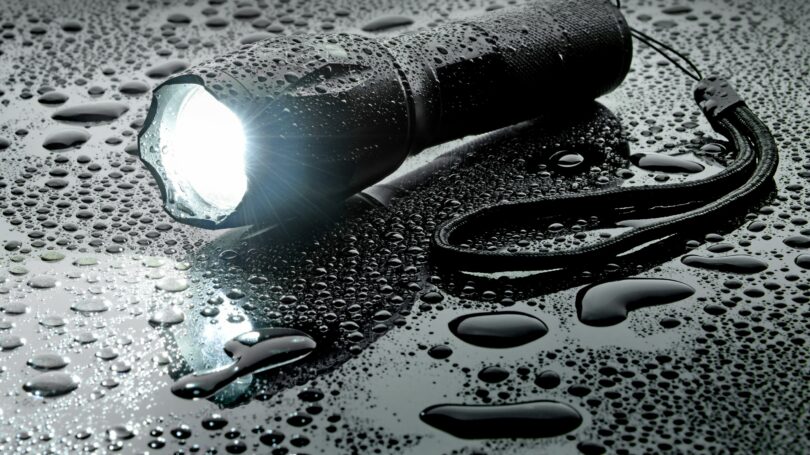
A flashlight is useful in all kinds of situations. When the power goes out, you can easily find your way to the circuit box. If your pen rolls under the couch, you can light up the area to find it. And if you have to make your way back to your car in a dimly lit parking lot, you can see where you’re going and possibly avoid a twisted ankle.
You could simply rely on your cell phone’s screen as a light source, but this isn’t the ideal solution. It doesn’t light up an area very well, and it drains your battery like crazy. So, for most EDC fans, a portable flashlight is a must-have tool.
If you’re going to carry a flashlight every day, you want it to be as light and compact as possible. Thanks to LED technology, you can buy tiny flashlights that fit easily in a pocket, or even on a key ring, and still shed plenty of light. For under $15, you can get a Coast HP1 light that runs on a single AA battery, fits in the palm of your hand, and can light up the ground for hundreds of feet.
Some hardcore EDC enthusiasts like to upgrade to tougher “tactical” flashlights. These military-grade flashlights are ruggedly built and have multiple lights modes, such as strobe or wide beam. Some of them shed as much light as 1,000 lumens of light – more than a 60-watt incandescent bulb. Also, many of them run on rechargeable batteries or long-lasting lithium batteries.
However, these fancy flashlights are pricey – between $40 and $150. They’re also quite a bit bulkier than a keychain light. If you’re new to EDC, you’re probably better off sticking with something small that you can easily carry every day.
5. Pocketknife
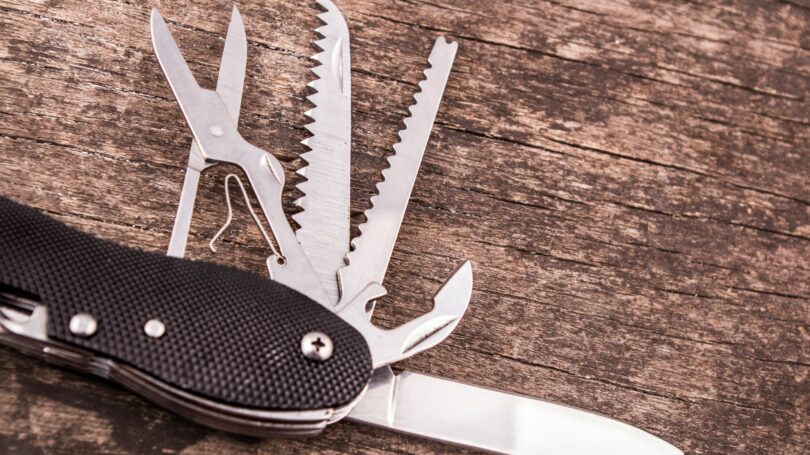
When some people hear the word “knife,” they immediately think of something that’s used as a weapon. However, the kind of knife that EDC fans favor – a folding pocketknife – is really meant to be used as a tool. You can use it to open mail, slice food, or cut through thick twine. It can be handy for small repairs around the house and even save your life if you have to cut through a seat belt after a car crash.
In addition to these uses, many folding knives come with extra attachments that can do other jobs. The classic Swiss Army knife, for instance, comes in dozens of models that can include a huge variety of special tools. For $30, you can get a compact model with a dozen different functions, including can and bottle openers, three screwdrivers, an awl punch, tweezers, and a toothpick.
However, any knife can still be used as a weapon, and some cities don’t allow you to carry one. Small folding knives are legal in most areas, but you need to check your local laws before you buy one. In some places, you can carry a folding knife only if the blade can’t be locked into its open position. In others, it depends on the size of the blade.
The best pocketknife is one that’s both legal in your area and convenient for your needs. It should be well-made, small enough to carry, and comfortable in your hand and in your pocket. And it should fold up securely since you don’t want a sharp blade floating around loose in your pocket. Fortunately, you can find many knives that fit this bill for $50 or less.
6. Multi-Tool
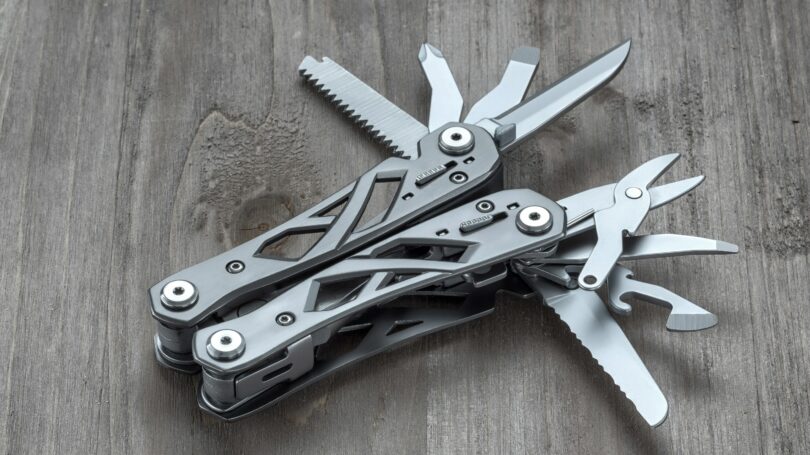
As its name implies, a multi-tool is many tools in one. These tools can do a huge variety of jobs, such as pulling nails, driving screws, stripping wires, and opening bottles – and still fold up small enough to tuck into a pocket. They’re useful, versatile, and portable – in short, everything that EDC stands for.
The line between a multi-tool and a pocketknife is somewhat blurry. Many of the jobs a multi-tool does can also be done by a multi-function pocketknife, such as the Swiss Army knife. Depending on your needs, you might decide to carry only the knife and skip the multi-tool, or vice versa. However, some EDC fans prefer a smaller knife that’s used only for cutting, plus a separate multi-tool to handle all the other jobs.
Multi-tools come in a wide range of styles and prices. The best-known one, the classic Leatherman tool, costs $80 and combines 17 tools in one palm-sized package. You can use it as a set of pliers, a wire cutter, scissors, a screwdriver, a file, or a miniature saw – to name just a few of its functions.
On the low-end of the price spectrum, there are one-piece multi-tools that have fewer functions, but are small enough to fit on a keychain. For instance, the $4 Gerber Shard is just three inches long and can serve as a screwdriver, wire stripper, pry bar, or bottle opener.
7. Watch
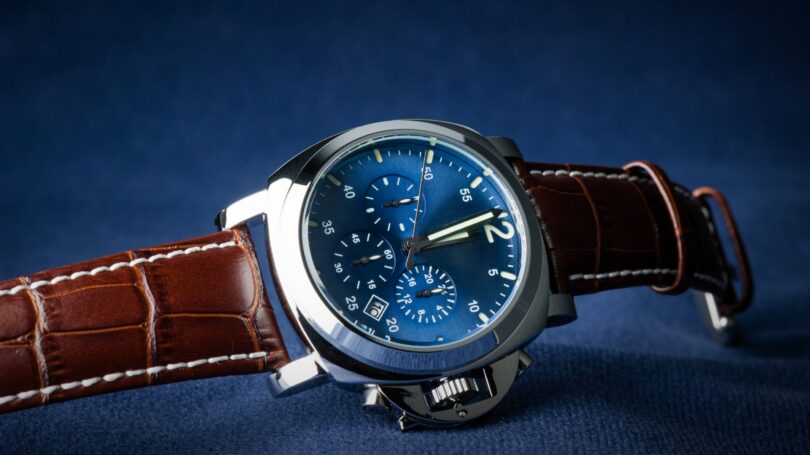
These days, a lot of people don’t bother wearing a watch. After all, if they want to check the time, they can just pull out their phone. But this takes more time than glancing down at your wrist, and it can come across as rude when you do it in front of a group. Plus, it leaves you with no way to tell time while your phone is charging.
Aside from these practical points, a watch can be a great way to express your personality. For instance, wearing a rugged, military-style watch says that you’re a tough, practical person. Opting for an antique pocket watch makes you look genteel and old-fashioned. And if you’re a serious athlete, you can show that with a sports watch or a fitness tracker that doubles as a timepiece.
It’s possible to spend thousands of dollars on a high-end watch, but you don’t have to spend that much for quality. You can find practical, durable watches at just about any price, from an ultra-simple $30 Timex Weekender to a $300 Seiko divers’ watch. Primer Magazine offers a guide to reliable brands in different price ranges.
8. Notebook
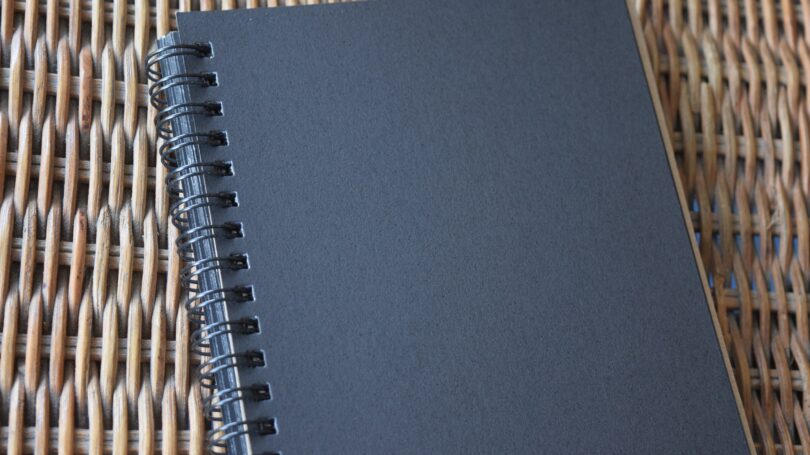
A pocket notebook comes in handy for writing down anything you need to remember. You can use your smartphone keyboard to enter a quick note, but it’s not exactly a convenient way to write anything longer. Writing on paper feels more comfortable, and it creates a permanent record that can’t easily be deleted.
There’s also some evidence that writing things out by hand helps you remember them later. A 2014 study published by the Association for Psychological Science found that students who took notes by hand grasped the material better than those who typed notes on a laptop.
A pocket notebook keeps all your notes together where you can find them. You can use it for:
- Reminders. If you think of something you want to buy at the store, you can whip out your notebook and write it down. If you hear a song you want to remember, you can note down the title and artist. You can note down names and phone numbers for people you’ve just met, or tear out a page to pass yours along to someone else.
- Tracking. Keeping track of your day-to-day spending is an important step in sticking to a budget. A pocket notebook offers a good way to do this. You can jot down all your purchases, with their prices, to enter into your budget software later. You can also use the notebook to check off items on your to-do list or record your progress at the gym.
- Journaling. Writing down your thoughts is often a useful tool. It can help you deal with emotions and develop a sense of gratitude for the good things in your life. It’s also fun to look back on those notes later and remember what you were doing a year ago. Having a notebook right in your pocket means you always have a place to put your thoughts down as they occur to you.
- Creative Work. Having a notebook on hand can open your creative impulses. You can use it to jot down poems, bits of dialogue, ideas for stories, or passing ideas to explore later. You can even use it to draw sketches and cartoons, something you can’t easily do on a phone screen.
The most common size for a pocket notebook is 3.5 by 5.5 inches. This is small enough to tuck in a pocket but big enough to fit a decent-sized list or sketch on each page. You can pick up a spiral-bound notebook this size for a couple of bucks at most drugstores.
However, many EDC fans favor notebooks that are a bit sturdier and nicer-looking. Field Notes, which comes in plain, ruled, or graph paper, is a very popular brand. You can get a set of three notebooks for $10 or upgrade to a limited edition on waterproof, tear-proof paper for $13.
9. Pen
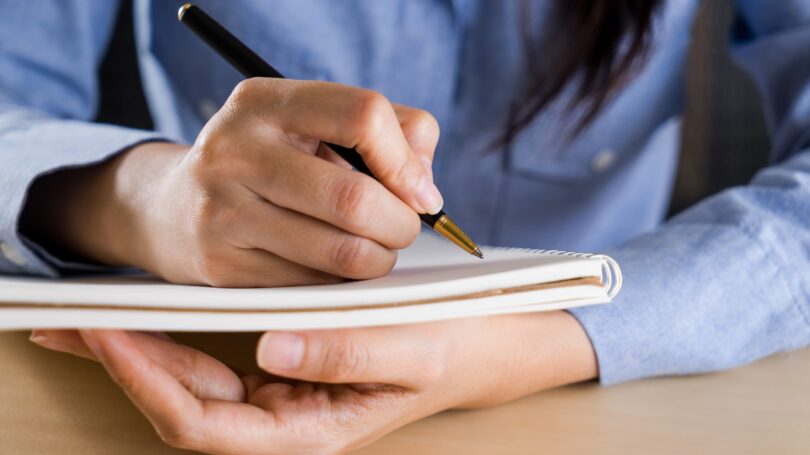
Of course, a notebook is no use without something to write with. Keeping a pen on hand means you’ll never need to borrow one to fill out a form or jot down a phone number. Shared pens in offices and other areas are often cheap and flimsy, and they can spread germs because they pass through so many hands.
Pens, like watches, are sold across a huge range of prices. You can buy ballpoint pens in bulk for as little as $0.10 each or spend upwards of $1,000 on a high-end fountain pen.
Most EDC fans avoid these extremes and choose a medium-priced pen – at least $10 but no more than $100. In this price range, you can find a wide variety of pens that write smoothly, hold up well to use, and are easy to carry. Pens around this price are also refillable, so they create less waste than single-use pens that get tossed when they run dry.
Final Word
Your EDC is a personal thing. Each person has different day-to-day needs, and so will require different gear to deal with those needs. It only makes sense to tailor your EDC to fit your job, habits, and style.
You might decide you don’t need all nine of the items listed here. Or you might decide to add a few others, such as a handkerchief, a lighter, a deck of cards, or a portable charger. That’s fine, as long as it works for you. The whole point of EDC is to have the things you need ready at hand – as compactly and conveniently as possible – and leave everything else behind.
What do you carry every day?